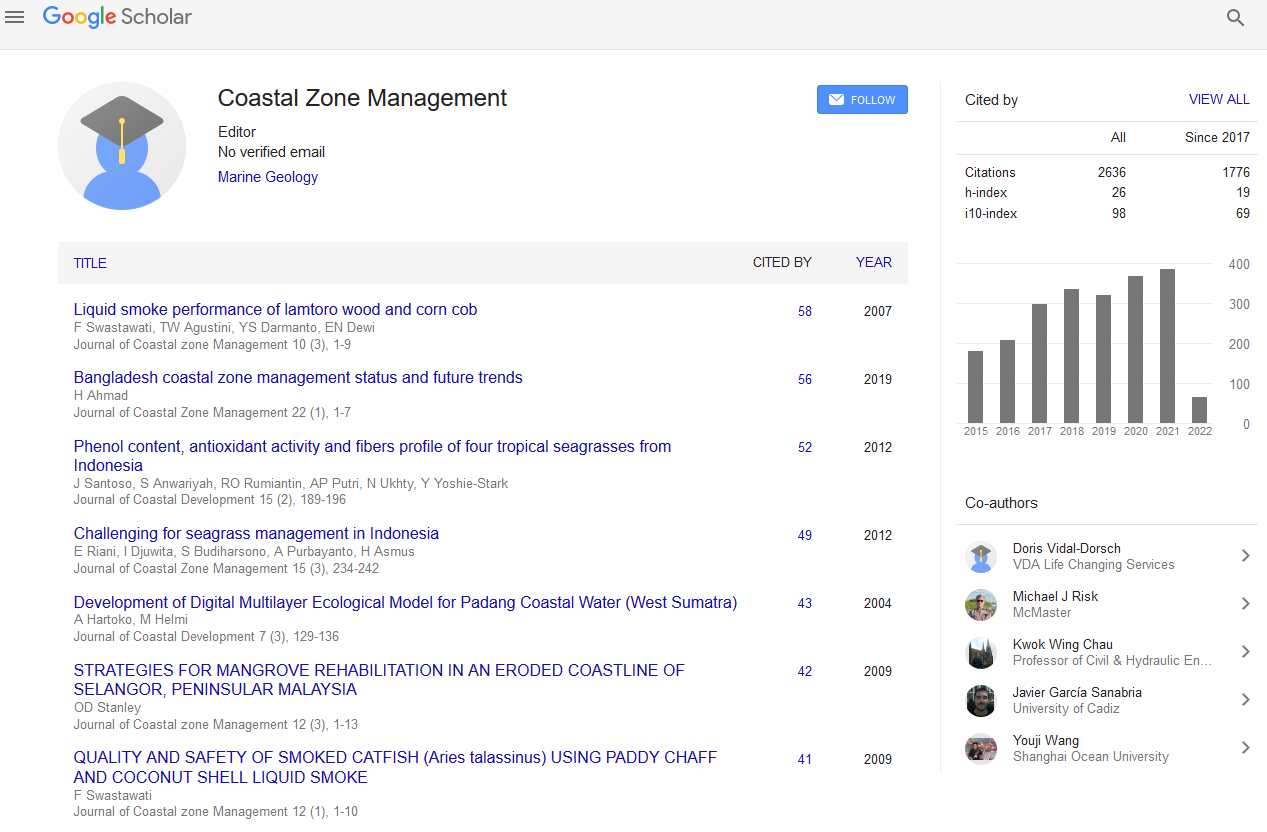Indexed In
- SafetyLit
- RefSeek
- Hamdard University
- EBSCO A-Z
- OCLC- WorldCat
- Publons
Useful Links
Share This Page
Journal Flyer

Open Access Journals
- Agri and Aquaculture
- Biochemistry
- Bioinformatics & Systems Biology
- Business & Management
- Chemistry
- Clinical Sciences
- Engineering
- Food & Nutrition
- General Science
- Genetics & Molecular Biology
- Immunology & Microbiology
- Medical Sciences
- Neuroscience & Psychology
- Nursing & Health Care
- Pharmaceutical Sciences
Abstract
The Effect of Chitin and Chitosan of Crab Shell on Water Sorption of Isotherm and Denaturation of Myofibrils during Dehydration Process
Y. S. Darmanto
Indonesian shrimp production is estimated at approximately 342,000 tons per year, followed by crab
production at the level of more than 200,000 tons annually. Apparently, 50 – 60% out of the total
production consists of waste in the form of crab shell. Crab shell is rich in chitin, chitosan, and
cellulose. The United States, Japan and other developed industrial countries have used chitin,
chitosan, and cellulose as raw material for various purposes, such as toxic waste processing, water
purification, enzyme immobilization, skin and hair cosmetics, bone connecting, biomedicine, paper and
textile industry, pharmacology, film, food industry, feed and others
Chitin (C8H13NO5) is a Poly-β-N-Acetyl-D-GlucoSamine standing for a natural biopolymer,
which constructs the shells of crab species. Chitin cannot be examined as a pure essence, since it is melt
with rich texture of protein, CaCO3, fat pigmen, and small amount of metals. In order to fabricate
Chitosan, one should demolish the Acetyl cluster of Chitin by employing strong alkalis. Chitin makes up
the combination between Poly (N-acetyl-2-amino-2-deoxy-β-D-gluco-piranosa) and N-acetyl-2-amino-
2-deoxy-D-glucopiranosa.
To find out the effect of chitin and chitosan from crab shell on the water sorption isotherm of
myofibrils protein during dehydration process, chitin and chitosan from crab shell were added to
myofibrils protein at the ratio of ratio 2,5 – 7,5 g / 100 g, homogenized, and afterwards dried in a
dessicator. After some time, moisture content, water activity (Aw), Ca-ATPase activity, and proximate
were analyzed. Mono layer water was analyzed according to Brunauer’s method (1968), multi-layer
water was analyzed according to Bull’s method (1944), whereas Ca-ATPase activity was analyzed using
the formula introduced by Katoh et. al. (1977).
The result of the analyses shows that a higher concentration of chitin and chitosan on
myofibrils resulted in higher amount of mono-layer and multi-layer water. The presence of different
amount of mono-layer and multi-layer water indicates that the state of water changing occurs on
myofibrils protein which in turn affects its quality. Likewise, the increase of chitin and chitosan
concentration suppresses the decrease of acceleration of Ca-ATPase activity.

